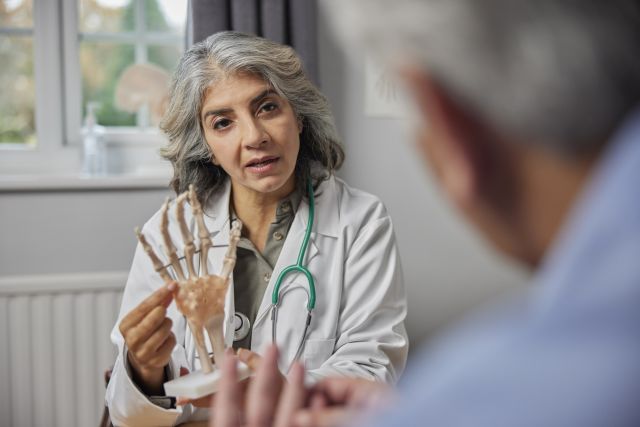Updated on March 11, 2022.
Rheumatoid arthritis (RA) is an autoimmune disorder that causes the body to attack its own tissues. Osteoarthritis (OA), on the other hand, tends to be caused by the wear and tear on joints over time. With osteoarthritis, the cartilage between the bones wears down, causing bone to rub against bone. With rheumatoid arthritis, the entire lining around the joint becomes inflamed and swollen, often causing bone loss. RA also tends to affect the entire body, causing achy muscles, fatigue, weight loss, and flu-like symptoms.
OA is far more common than RA, but because RA is a serious condition, it's important to know how to tell the difference. Here are five signs that it may be RA, not OA.
- Joint symptoms start before the age of 50. RA is most common in people age 30 to 60, but children can also be affected. OA usually starts after age 50.
- Pain and stiffness start in your hands and feet. RA symptoms often begin in the hands and feet, affecting other joints later. OA more commonly affects the hips, knees, feet, and spine.
- Symptoms include heat and redness at the joint. Due to inflammation, fever at the joint site is a common RA symptom. OA symptoms include pain and swelling without heat.
- Symptoms affect both sides of the body. OA pain is rarely symmetrical and usually affects the joint on one side of the body. A tell-tale sign of RA is that it affects both hands, both wrists, or both feet equally.
- A blood test shows inflammation or anemia. Because RA is an autoimmune disease, signs of it can be seen in a blood test. No blood-related symptoms are associated with OA.
Both RA and OA can also cause changes in the appearance of joints, but the changes are different. People with OA may develop bony, round growths at the finger joints (called Bouchard's or Heberden's nodes), while people with RA may notice nodules under the skin, especially on the arm or near the elbow joint. Over time, people with rheumatoid arthritis may also experience curving or bending of the fingers, hands, or other joint areas due to inflammation, swelling, and erosion of the bone and joint linings.






